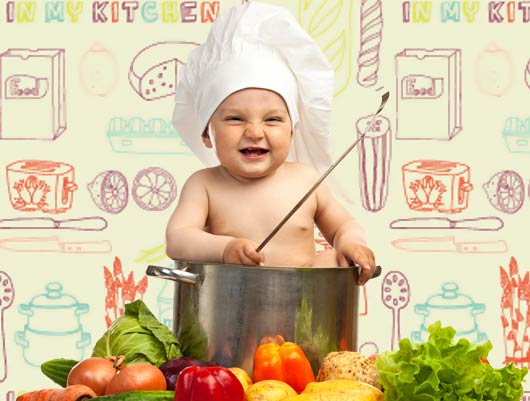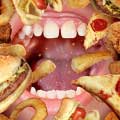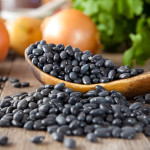
Editor’s Note: The following article is one in a series of pieces inspired by a celebration of Latino heritage and smart nutrition, brought to you by Beech-Nut/Goya.
I’ll never forget when my eldest was about nine months old and we went out for brunch with my parents. She demolished an entire avocado as we munched on our fancy brunch food. My mother looked appalled that I had allowed my infant to essentially inhale so much food! I figured that if she was hungry she would eat it and if she wasn’t, she wouldn’t. Also, the nutritional benefits of avocado are astounding, so I felt unashamed that she had eaten so much in one sitting.
Now that she’s 2½, I understand a bit more about portion sizes and appropriate eating and, while I still encourage my youngest, now almost 12 months, to eat as much as she wants of whatever healthy food I put in front of her, I’m more conscientious about meal size and just how much I’m slicing and dicing onto her plate.
Worrying About Portions, Not Just For Grown-ups?
With the obesity epidemic continuing around the world, everyone seems concerned about how much is too much when it comes to food. For adults, the dietary recommendations have evolved quite a bit but, for babies, the jury is still out. Many parents choose to start with a cereal as baby’s first solid food and follow a pediatrician’s recommendations when it comes to filling the bowl. Other parents decide to mash up a banana or avocado for their baby’s first solid experience and there’s still another school of thought that encourages parents to begin with jarred, pureed green beans so baby doesn’t develop a sweet tooth!
Read Related: French Kids Eat Everything: Our Kids Can Too!
We’re a population obsessed with food and sometimes, overthinking what we feed our children only creates bigger problems (and bellies) for their future. There is a reason why baby food comes in packages that are only 2-6 ounces, and there is a reason there is no Dulce de Leche flavor of baby food. But if you stick to the healthy stuff and keep in mind that your baby’s stomach is much smaller than yours, you’ll do just fine.
Tiny Tummies, Big Appetites
At birth, your baby’s stomach is about the size of a cherry. It grows quickly, reaching the approximate size of an egg at seven days old. From there, the stomach remains a pliable organ, growing when full and shrinking a bit when empty. It grows as your baby grows, but even at 4-6 months when you’re starting your baby on solids, it’s still a tiny space to fill. When your baby is first starting solids, a small bite or two of a food is enough to experience the flavors, textures, and sensations solid food.
Until your baby is 12 months old, breast milk or formula should be her primary source of nutrition so you need not rely on the solid foods to give your baby what she needs to thrive. First meals should consist of 1-2 tablespoons of food, and that’s all. As solids become more familiar, fun, and consistent, your child of less than 1 year old can enjoy up to ½ cup of most foods in one sitting. For example, a 9-month-old may eat ¼ cup of plain yogurt with ½ cup of fruit and ¼ cup of pureed vegetables as a meal. So, what do you do if your baby still seems hungry after polishing off your impeccably prepared and pre-measured meal? You feed her more.
Watch Your Baby & Trust Your Instincts
Infants’ appetites fluctuate greatly from day to day. There are incredible growth spurts, teething discomfort, and developmental milestones that can impact how much food your baby wants to consume in a day, week, or month. This is why pediatricians stress the importance of continuing to give your baby breastmilk or formula as her main source of nutrition during the first year. Babies are finicky and can’t be trusted to meet their nutritional needs by eating every bite you present to them, even if you’ve done your best to choose the best food and measure out each and every meal.
If your baby wants to keep eating until she polishes off an entire avocado, perhaps it’s a sign that she’s going to grow an inch, seemingly overnight (it happens!). And if your baby is gagging and turning her head away from her favorite puree, it’s safe to assume that those gums are making her mouth feel miserable and she’d rather snuggle up next to you with a bottle or breast instead. Don’t ever force food into your baby’s mouth and don’t panic if some of it comes right back up. Portion sizes for babies are flexible and, unlike adults, babies lack the social cues and cultural norms that impact what and how much we choose to eat. If you trust yourself to trust your baby, you’ll do great and she’ll be well-nourished—and not overfed.
Beech-Nut offers an informative feeding guide to help you determine portion size, timing and variety in your baby’s diet.










